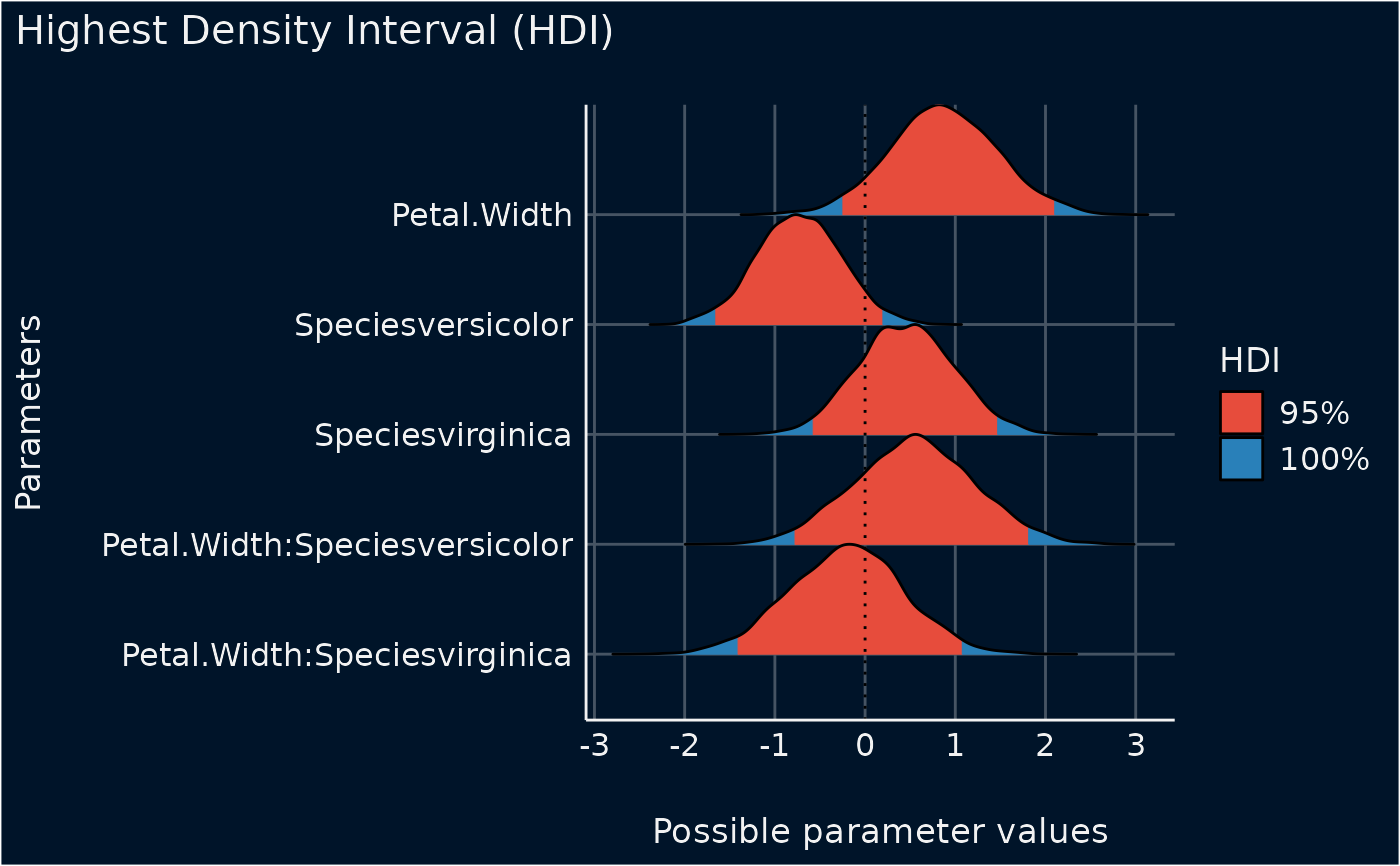The plot() method for the bayestestR::hdi() and related
function.
Usage
# S3 method for class 'see_hdi'
plot(
x,
data = NULL,
show_intercept = FALSE,
show_zero = TRUE,
show_title = TRUE,
n_columns = 1,
...
)Arguments
- x
An object.
- data
The original data used to create this object. Can be a statistical model.
- show_intercept
Logical, if
TRUE, the intercept-parameter is included in the plot. By default, it is hidden because in many cases the intercept-parameter has a posterior distribution on a very different location, so density curves of posterior distributions for other parameters are hardly visible.- show_zero
Logical. If
TRUE, will add a vertical (dotted) line at 0.- show_title
Logical. If
TRUE, will show the title of the plot.- n_columns
For models with multiple components (like fixed and random, count and zero-inflated), defines the number of columns for the panel-layout. If
NULL, a single, integrated plot is shown.- ...
Arguments passed to or from other methods.
Examples
library(rstanarm)
library(bayestestR)
set.seed(123)
m <- suppressWarnings(stan_glm(Sepal.Length ~ Petal.Width * Species, data = iris, refresh = 0))
result <- bayestestR::hdi(m)
result
#> Highest Density Interval
#>
#> Parameter | 95% HDI
#> ---------------------------------------------
#> (Intercept) | [ 4.48, 5.11]
#> Petal.Width | [-0.25, 2.10]
#> Speciesversicolor | [-1.66, 0.20]
#> Speciesvirginica | [-0.58, 1.47]
#> Petal.Width:Speciesversicolor | [-0.78, 1.81]
#> Petal.Width:Speciesvirginica | [-1.41, 1.08]
plot(result)

